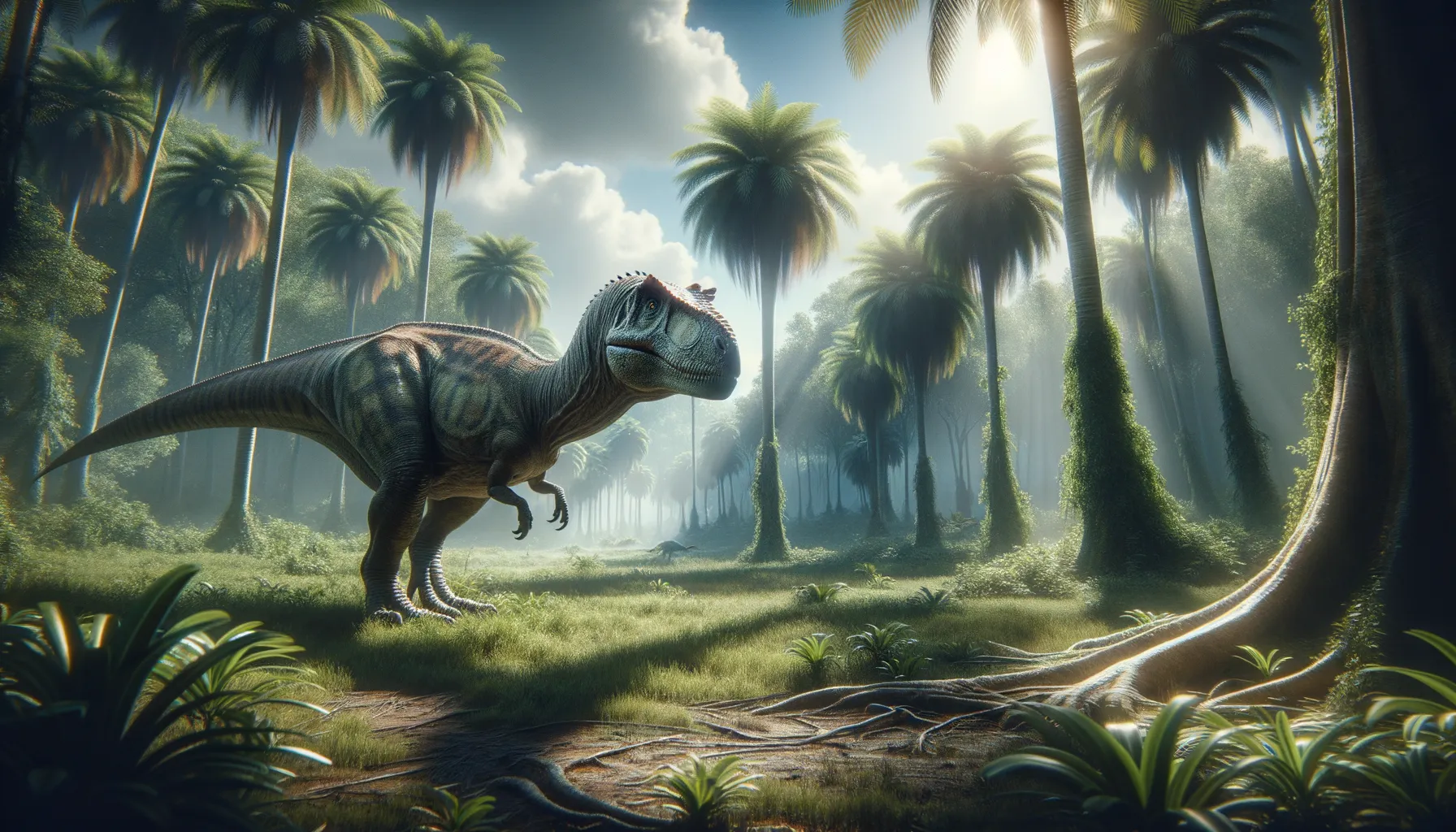
Asylosaurus
Ancient wanderer of Jurassic greens.
Period
Jurassic
Length
Roughly 4 meters long.
Height
Approximately 1.5 meters at the hips.
Weight
Estimated around 100 kilograms.
Asylosaurus was a small herbivorous dinosaur that roamed the Earth during the early Jurassic period. Its fossils were discovered in England, providing insights into the diversity of early dinosaurs. Known for its moderate size and bipedal locomotion, it likely foraged for vegetation in ancient forests. The study of Asylosaurus helps scientists understand the evolution of plant-eating dinosaurs and their adaptations over time.
Diet
Asylosaurus was a herbivore, primarily feeding on low-lying plants. Its diet likely consisted of ferns, cycads, and primitive conifers. Given its size and dental structure, it would have foraged closer to the ground in undergrowth areas.
Hunting
Asylosaurus did not hunt as it was herbivorous. Instead, it spent time seeking out vegetation rich areas to satisfy its dietary needs. It relied on speed and awareness to evade carnivorous threats.
Environmental challenges
Asylosaurus faced challenges from predators like larger carnivorous dinosaurs. Environmental shifts, such as changes in plant availability due to climatic conditions, could also impact its survival. Competition for resources with other herbivores might have been a constant struggle. These factors necessitated adaptability in both foraging and evasion strategies.
Speed
Moderate pace, typical of early dinosaurs.
Lifespan
Estimated at around 20 to 30 years.
First discovery
Discovered in the 19th century in England.
Fun Facts
- Asylosaurus was a small dinosaur that lived around 210 million years ago during the Late Triassic period.
- Its name means 'unharmed lizard', which stems from the fact that its fossils were protected and preserved despite many challenges.
- Asylosaurus fossils were first discovered in Great Britain, showcasing that dinosaurs once roamed this region.
- This dinosaur was likely herbivorous, feeding on plants that were abundant during its time.
- Asylosaurus is part of the group of dinosaurs known as 'sauropodomorphs', early relatives of the giant long-necked sauropods.
- Despite its ancient origins, Asylosaurus was only formally named and described in the early 2000s, making it a recent addition to the dinosaur family tree.
- The fossilized remains of Asylosaurus include some of the best-preserved dinosaur bones from the Triassic period found in the UK.
Growth and Development
Asylosaurus hatched from eggs, with young individuals growing rapidly to reach sizes that reduced vulnerability to predators. Growth patterns would have been influenced by food availability and environmental conditions. Fossil evidence suggests cyclical growth patterns linked to seasonal availability of resources.
Habitat
Asylosaurus likely inhabited lush, forested areas with abundant plant life. Its environment would have included a mix of open spaces for movement and dense vegetation for feeding. Water sources such as rivers or lakes would have been essential for hydration and supporting plant ecosystems.
Interaction with other species
Asylosaurus likely coexisted with other herbivores, sharing resources or competing when necessary. Its primary interactions with carnivores would be as potential prey, necessitating keen senses and awareness. Mutualistic relationships with certain plants could have emerged, benefiting both the dinosaur and the flora.
Natural lifespan
Lived potentially for 20 to 30 years under optimal conditions.
Reproduction
Asylosaurus laid eggs in nests on the ground, with clutch sizes likely influenced by environmental conditions. Parental care, if present, would have been limited to nesting and potentially guarding eggs. Young had to quickly adapt to independence after hatching.
Social behaviour
Asylosaurus may have lived in small groups to enhance foraging efficiency and protection. Group living would mitigate predator risks while allowing shared knowledge of food sources. Communication among individuals was likely through vocalizations or visual signals.
Fossil locations
Asylosaurus fossils were primarily found in England, providing key insights into early European dinosaur fauna. The fossil sites have helped paleontologists understand the geographical distribution of early Jurassic herbivores. Discoveries predominantly occurred in regions known for rich fossil deposits from this era.
